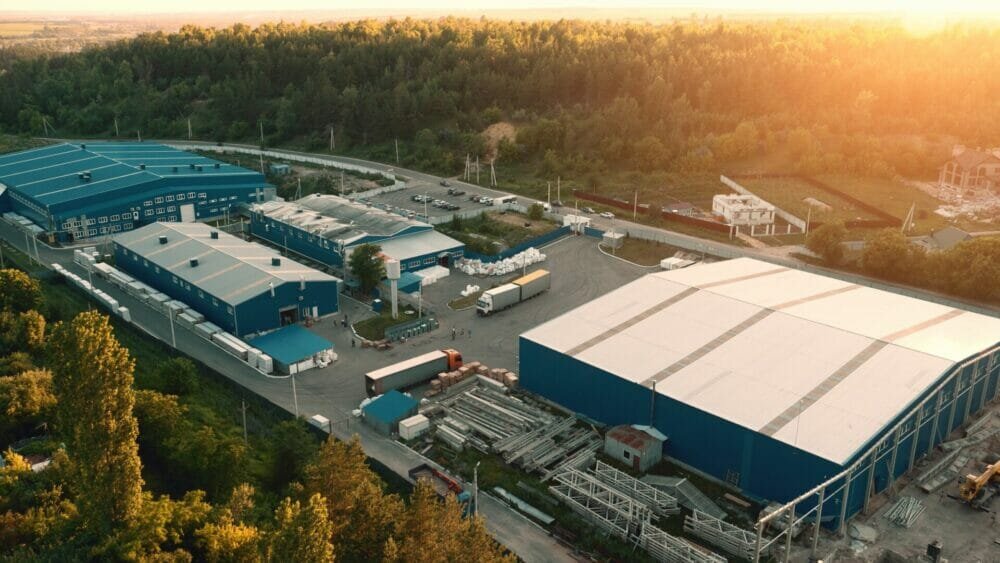~ Making cleaner choices for smart energy use ~
The warehousing and logistics sector is incredibly energy-intensive. Worryingly, a 2019 survey by the Carbon Trust found that around 30 per cent of energy consumption in the sector was either inefficient, or totally unnecessary. Here Vijay Madlani, co-CEO of renewable energy pioneer Katrick Technologies, explains how shifting to greener power can cut costs and improve sustainability.
Warehousing and logistics play an integral role in industry and distribution worldwide. Increased demand for fast moving consumer goods (FMCG) and a huge shift to omni-channel retailing in recent years has fuelled growth. Now, according to the UK Warehousing Association (UKWA) in the UK alone there are over 1,500 warehouse units occupying almost 424 million square feet.
Energy bills make up 15 per cent of the running costs of the average warehouse or distribution facility. There are several key areas of energy consumption — lighting, heating, ventilation, forklifts, industrial equipment and automation. In total, the Carbon Trust places the estimated energy usage of the warehousing sector at 3.2 terawatt hours (TWh), or roughly 33 kilowatt hours per square metre (kWh/m2). While this is lower per square metre than some other facility types, the sprawling footprint of warehouses mean that costs can quickly add up. Overall, smarter energy practices offer a huge opportunity for both cost saving and sustainability.
The opportunities of greener energy
Figures from The Carbon Trust based on typical energy usage place the industry’s carbon emissions at roughly 698,000 tonnes of CO2 per annum. As a large producer of CO2, the warehousing and logistics industry is naturally looking for ways to improve sustainability. According to the European Logistics Supply Chain Sustainability Report, 12 per cent of companies believe that improvements in sustainability should be made in warehousing, placing it second highest in the list of respondent’s priorities.
Further to that, 80 per cent of respondents state that reducing their CO2 emissions in the next five years is a focus in their environmental efforts. In addition, 28 per cent of respondents said that they are including environmental, social and governance (ESG) targets as contractual obligations for supply chain partners.
Making a change
Increasing the amount of power generated from renewable sources, such as solar or wind, is a primary way to reduce emissions and energy consumption, for a smaller carbon footprint and reduced costs.
To further reduce reliance on the grid and fossil fuels, implementing a microgeneration system for small-scale production of renewable energy can have substantial business benefits. Generating green power on-site means bypassing supplier costs and safeguarding a supply in a sometimes-unpredictable energy landscape. It can also provide an additional stream of revenue, with surplus electricity able to be sold back to the grid.
As well as generating its own renewable energy and reducing the greenhouse gas emissions of a site, a microgeneration system can create additionality. Additionality adds and enables new grid capacity instead of using the existing energy supply though a provide by reducing offtake and even by supplying individually generated green power back to the grid.
Some warehouses generate energy from their own onsite powerplants, but others look for more sustainable options. One way that this is currently achieved is using photovoltaic (PV) solar panels. As warehouses have large amounts of roof space suitable for installing equipment, they are a viable option for generating clean electricity without emissions.
Wind power in warehousing?
While solar is one option, one of the most cost-effective and reliable sources of renewable energy is wind power. Because of the suitability of the UK’s climate, there is often only 4.5 hours of peak sun on average, but wind power is a significant contributor to the energy mix, making up 26.1 per cent of total energy in the last quarter of 2021. Traditionally this power is generated by large turbines constructed in open spaces, but high costs and geographical limitations mean that they’re not always a feasible option.
Operations based in urban or industrial areas may find wind power challenging to implement, due to the lack of open spaces and structures that can impede wind flow. This can make microgeneration through wind power inaccessible to many, but new technologies are making wind power easier than ever to use on a micro scale.
Scottish greentech innovator Katrick Technologies is addressing the obstacles to wider use of renewable technology. By identifying untapped sources of wind power and determining how best to harness them, it has developed a novel wind power generation system to take advantage of previously unexploited winds. Its wind panels are compact and modular, using unique aerofoil technology to capture kinetic energy from wind and convert it to green energy.
The panels are available in several sizes and can be combined to form an array, allowing buyers to tailor a solution to their individual energy needs and purchase as many panels as necessary. They can be fitted to buildings and installed in residential or industrial areas, removing the need for large open spaces. This makes them far more flexible, particularly for sites where turbines might be impractical.
The size of the panels and their sophisticated aerofoil technology allows them to use a far wider range of wind frequencies, including low-level ground winds. A ten-panel array could potentially generate up to 22,000 kWh of electricity.
Addressing the issue of the sector’s substantial carbon emissions, the panels offer savings of up to seven tonnes of CO2 per year per 10 kW rated solution. They can also protect profits, with the panels having a levelised cost of energy (LCOE) of 8p per kW. This is a lower cost in the long term than every other solution except onshore wind. For an energy-intensive industry like warehousing and logistics, this presents a huge opportunity to save money.
It’s clear that the warehousing industry could improve its green credentials, and with warehouses comprising such a significant amount of space in the UK, using cleaner power for their operations is a great place to start. By embracing cleaner ways of producing electricity and incorporating environmentally conscious technologies into their operations, businesses can reap the financial benefits whilst reducing their own impact on the planet.
To find out how Katrick Technologies can support warehousing operations in their decarbonisation efforts, visit the website here.








